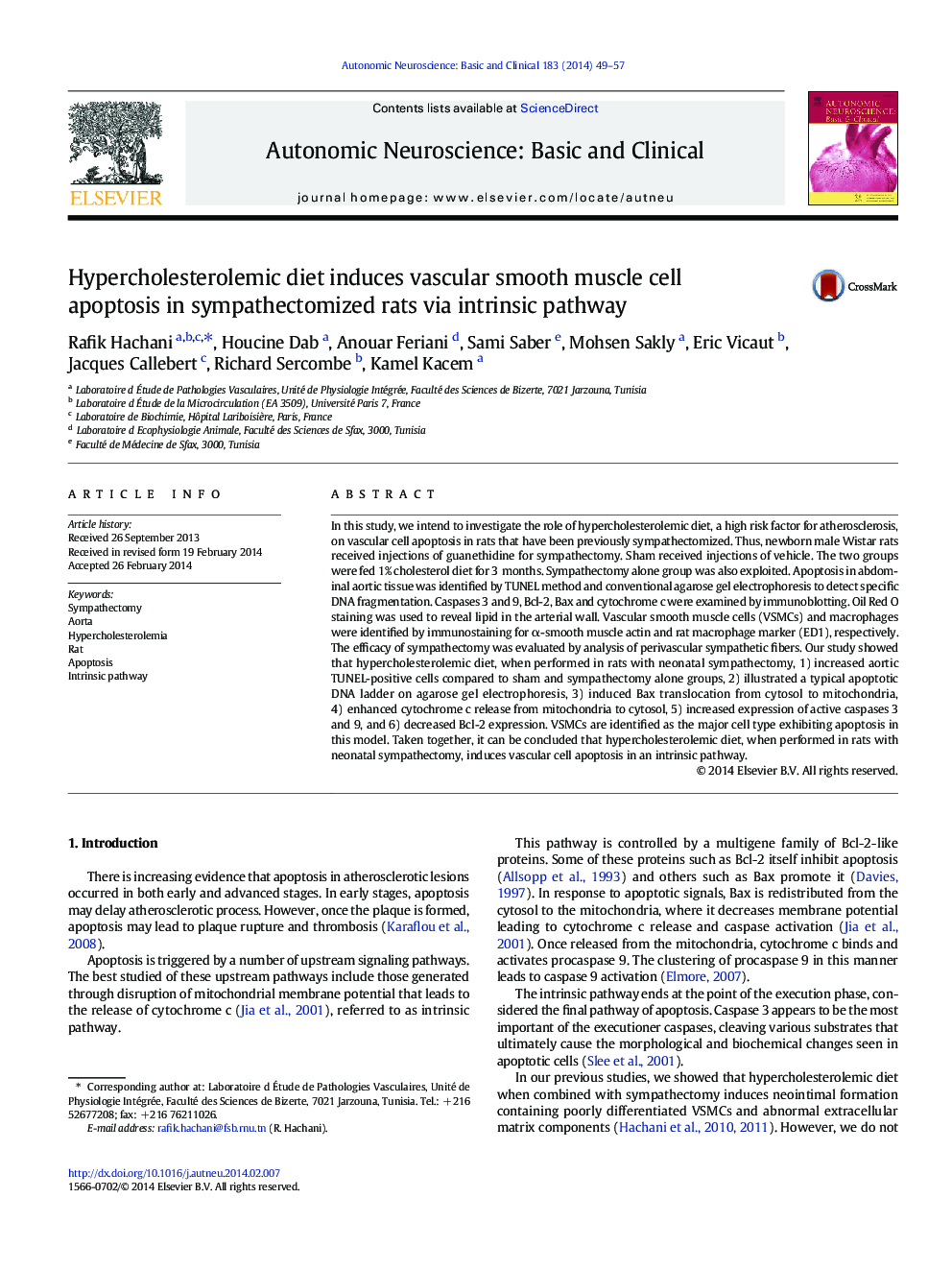| Article ID | Journal | Published Year | Pages | File Type |
|---|---|---|---|---|
| 6004039 | Autonomic Neuroscience | 2014 | 9 Pages |
In this study, we intend to investigate the role of hypercholesterolemic diet, a high risk factor for atherosclerosis, on vascular cell apoptosis in rats that have been previously sympathectomized. Thus, newborn male Wistar rats received injections of guanethidine for sympathectomy. Sham received injections of vehicle. The two groups were fed 1% cholesterol diet for 3 months. Sympathectomy alone group was also exploited. Apoptosis in abdominal aortic tissue was identified by TUNEL method and conventional agarose gel electrophoresis to detect specific DNA fragmentation. Caspases 3 and 9, Bcl-2, Bax and cytochrome c were examined by immunoblotting. Oil Red O staining was used to reveal lipid in the arterial wall. Vascular smooth muscle cells (VSMCs) and macrophages were identified by immunostaining for α-smooth muscle actin and rat macrophage marker (ED1), respectively. The efficacy of sympathectomy was evaluated by analysis of perivascular sympathetic fibers. Our study showed that hypercholesterolemic diet, when performed in rats with neonatal sympathectomy, 1) increased aortic TUNEL-positive cells compared to sham and sympathectomy alone groups, 2) illustrated a typical apoptotic DNA ladder on agarose gel electrophoresis, 3) induced Bax translocation from cytosol to mitochondria, 4) enhanced cytochrome c release from mitochondria to cytosol, 5) increased expression of active caspases 3 and 9, and 6) decreased Bcl-2 expression. VSMCs are identified as the major cell type exhibiting apoptosis in this model. Taken together, it can be concluded that hypercholesterolemic diet, when performed in rats with neonatal sympathectomy, induces vascular cell apoptosis in an intrinsic pathway.
